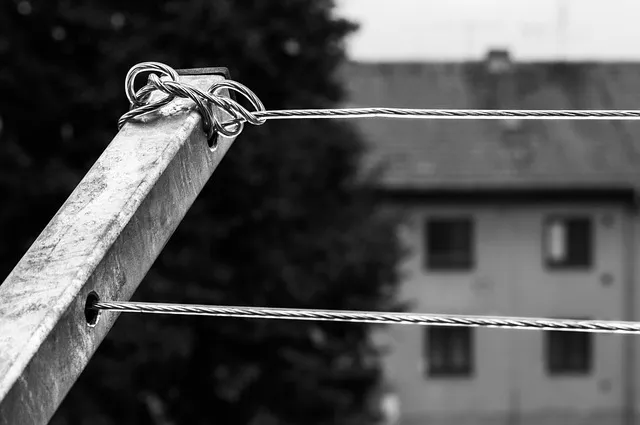How Can You Improve Dryer Ventilation Through Maintenance?
First things first, let’s talk about lint. Over time, lint builds up in the vent, reducing airflow and making your dryer work harder than it should. This not only slows down drying times but can also be a fire hazard. Regularly cleaning the lint filter after each use is a simple yet effective step. But that’s just the start. For a deeper clean, use a vent cleaning brush to reach further into the ductwork at least once a year. Think of it as giving your dryer a thorough check-up.
Additionally, check the exterior vent cover to ensure it’s not blocked or damaged. If the cover is stuck, the hot air has nowhere to go, which can cause inefficiencies and even lead to overheating. A functional cover should open easily when the dryer is on and close tightly when it’s off.
Inspecting the ductwork itself is another essential task. If you notice any kinks or damage in the vent hose, they can obstruct airflow. Replacing damaged sections or straightening out kinks can make a world of difference.
Incorporating these maintenance tips into your routine doesn’t just enhance your dryer’s performance; it can also extend its lifespan and keep your home safer. So, why let poor ventilation slow you down? Taking these simple steps will ensure your dryer runs smoothly and efficiently.
Boost Dryer Efficiency: Essential Maintenance Tips for Better Ventilation
First things first: always clean the lint filter before each use. It’s like giving your dryer a fresh pair of running shoes. A clogged filter restricts airflow, making your dryer work harder and longer. And don’t stop there—make a habit of checking and cleaning the vent hose at least once a year. Think of the vent hose as the dryer’s airway; if it’s blocked, the dryer can’t breathe properly, which hampers its performance.
Next, inspect the ductwork for any signs of lint buildup or damage. Over time, lint can accumulate in the ducts, creating a fire hazard and forcing your dryer to work overtime. If you spot any issues, it’s worth calling in a professional to handle the cleanup or repairs. This is one instance where DIY might not be the safest route.
Another tip? Ensure that your dryer is level. If it’s tilted or uneven, it can cause excessive vibration and wear. Place a level on the dryer and adjust the feet as necessary to keep it steady. It’s like setting up a sports team—every player needs to be in their optimal position to win the game.
Lastly, keep an eye on the moisture sensor inside the dryer. If it’s dirty or malfunctioning, it might not accurately gauge when your clothes are dry, leading to unnecessary extra cycles. Wipe it clean with a soft cloth to maintain its sensitivity.

These small yet crucial steps can significantly enhance your dryer’s performance, saving you time and energy.
The Secret to Longer-Lasting Dryers: A Guide to Effective Ventilation Maintenance

Ventilation is crucial because it ensures that hot, moist air is expelled efficiently. When vents are clogged or blocked, your dryer has to work harder, which can lead to wear and tear. Imagine trying to breathe through a straw that’s half-blocked—exhausting, right? That’s what your dryer experiences with poor ventilation.
To keep your dryer running longer, start with a thorough vent cleaning. Most experts recommend doing this at least once a year. It’s like giving your dryer a spa day. Remove the lint trap and clean it thoroughly, then check the ductwork for any blockages or lint buildup. A vacuum can be your best friend here, helping to remove stubborn lint that might be lurking inside the ducts.
Also, don’t overlook the outside vent. It’s the final exit point for all that hot air, and if it’s blocked or clogged, your dryer’s efficiency drops. Ensure the outside vent flaps open properly and that nothing is obstructing it.
Regular maintenance doesn’t just prolong your dryer’s life; it also enhances its efficiency, saving you money on energy bills and avoiding costly repairs. By investing a little time in ventilation upkeep, you’ll keep your dryer running smoothly and efficiently for years to come.
Stop Dryer Fires Before They Start: Key Ventilation Maintenance Strategies
First off, let’s talk about lint. It’s not just a harmless fluff; it’s highly flammable. Regularly cleaning the lint trap before every load is your first line of defense. But don’t stop there—over time, lint can sneak into the venting system behind the dryer. This is where things get dangerous. A clogged vent not only reduces efficiency but can also cause a dangerous build-up of heat.
To prevent this, make a habit of inspecting the venting system. You don’t need to be a handyman to do this—just grab a flashlight and look behind your dryer. If you notice lint escaping from the vent or the venting hose looks kinked, it’s time for a thorough cleaning. You can use a vacuum with a long hose attachment or invest in a vent cleaning brush to reach deep into the ducts.
Another crucial tip is to ensure proper vent installation. The vent should be as short and straight as possible. Long, convoluted ducts can trap lint and restrict airflow, making your dryer work harder and putting you at risk. If your venting system is in need of an overhaul, don’t hesitate to call a professional.
Lastly, consider a vent booster fan if your dryer is far from the outside wall or if you have a particularly long venting run. This little device can help improve airflow and keep things safe.
By staying on top of these simple maintenance tasks, you can keep your dryer running smoothly and avoid turning your laundry room into a fire hazard.
Dryer Ventilation 101: How Regular Maintenance Can Save You Money
Imagine your dryer vent as a highway for hot, moist air to escape. Over time, lint, dust, and other debris can pile up, turning this smooth highway into a congested traffic jam. When your vent is clogged, your dryer has to work harder to push out the hot air, leading to longer drying times and higher energy bills. It’s like trying to run a marathon with a heavy backpack—exhausting and inefficient!
Regular maintenance is your ticket to a well-oiled, cost-saving machine. By cleaning out the vent every few months, you ensure that air flows freely and your dryer doesn’t overheat. This not only speeds up the drying process but also reduces wear and tear on your appliance. Less strain means fewer repairs, and that translates to more cash in your pocket.
Consider it a small investment for a major payoff. A clean vent lowers your energy consumption, which means lower utility bills. Plus, it helps prevent potential fire hazards caused by lint buildup—a serious safety concern. Just like changing the oil in your car keeps it running smoothly, regular vent cleaning keeps your dryer efficient and safe.
So, don’t wait for your dryer to give you a sign that it’s struggling. Keep that ventilation system in check, and you’ll be amazed at the difference it makes both in your energy bills and your dryer’s performance.

